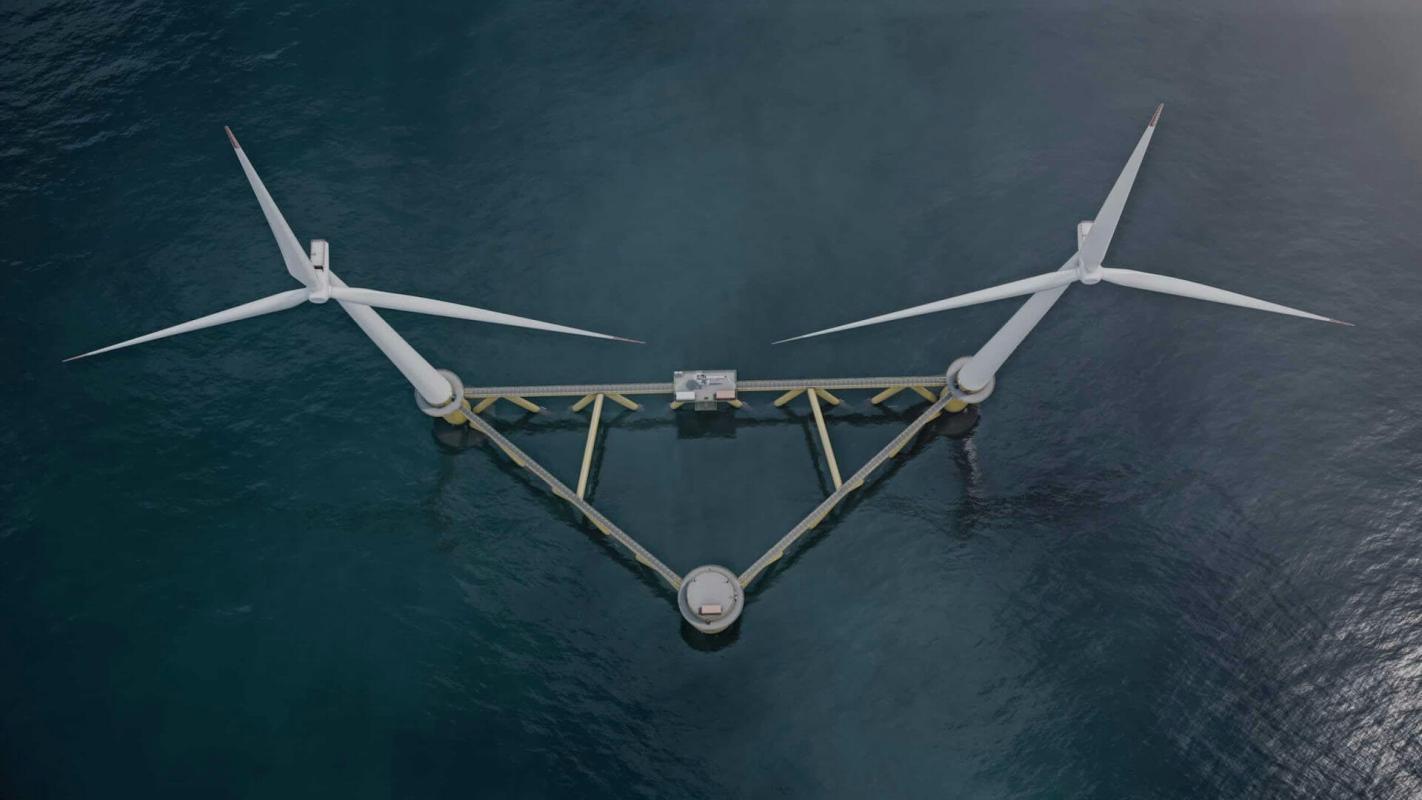Sweden's Hexicon is already known in the wind-energy world for its unique twin turbine concept for floating offshore projects. Now the company is looking at how the burgeoning sector can better share the oceans with the crucial fishing industry.
When compared to the awesome engineering needed to place and operate massive offshore turbines, this idea sounds much easier to pull off, at least as described by Hexicon.
Fish farms will be placed between the turbine platforms and anchored in place. Fish-catching boxes will be dropped up to 230 feet below the surface and checked periodically for the catch. The hauls will then be transported to the coast via ship, as the company describes it.
It's a unique marriage of the wind- and fish-catching industries that Hexicon leaders deem necessary to foster offshore wind growth while protecting a vital food source.
"Seafood and offshore wind power are two industries that Sweden will need more of in the future. … That is why we want to find ways to combine these two pieces," Freja Offshore CEO Magnus Hallman said in a CleanTechnica report.
Freja, a renewable developer from Sweden, along with Norwegian underwater fish cage-maker Subfarm, are among enterprises involved with the project. It's set to be located on a proposed wind farm about 25 miles off the Swedish coast.
Europe's west coast is a hub of wind activity. Developers in Denmark are preparing to spend more than a billion dollars to create islands — yes, create them — to better manage energy generated by massive wind efforts.
Offshore projects are running off the coast of 19 countries. Electricity from those turbines accounted for 7.1% of the world's wind power in 2022, according to the Global Wind Energy Council.
Renewable energy is crucial to reducing planet-warming air pollution, which is having an impact on even the North Sea between Western Europe and the United Kingdom. The Guardian reported in September that unprecedented warming waters there, a product of human-caused planet overheating and natural El Niño patterns, threatens fish survival. More than 3 billion people worldwide rely on wild-caught and farm-raised fish for food, the World Wildlife Fund reported.
Hexicon's concept has the potential to help both industries. The company's press release on the news states that offshore installations often attract fish and shellfish, though ships can't navigate between the turbines. The basket concept opens up a new opportunity while delivering cleaner energy, the experts claim.
It's an example of a larger effort to transform our energy system to more planet-friendly generation methods. Taking part in the switchover is becoming more attainable, even for homeowners. Community solar programs allow consumers to tap into clean energy benefits without rooftop panels, for example. In fact, a few clicks while online can often help people to save around 15% on electricity bills a year, avoiding 8,500 pounds of air pollution. That's good news for our warming oceans, too.
When it comes to Swedish wind efforts, the offshore turbine/fishing project is an example of how renewable energy efforts can complement other industries, even in tough North Sea conditions.
"By co-locating with wind power, we can further reduce the ecological footprint because much of the infrastructure is already in place," Subfarm board chairperson Karl C. Strømsem said in the press release.
Join our free newsletter for weekly updates on the coolest innovations improving our lives and saving our planet.









